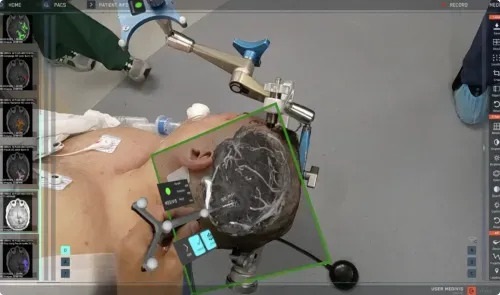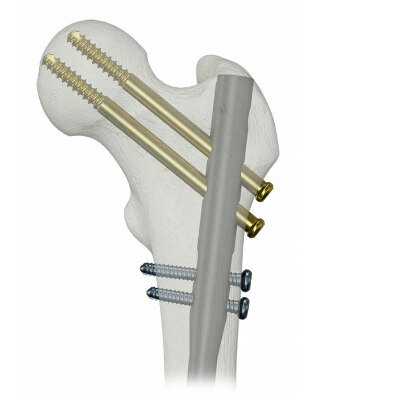Smartphone Stethoscope Captures, Analyzes and Shares Cardiovascular and Pulmonary Sound Data
|
By HospiMedica International staff writers Posted on 07 Jun 2023 |

As human longevity increases, the incidence of heart disease and cardiac complications related to other conditions also rises. Currently, cardiovascular diseases (CVDs) are the primary cause of death worldwide, accounting for 32% of all global fatalities. Consequently, the population at risk of CVD is increasing, creating the need for convenient, accessible screening for symptoms whenever and wherever they occur. A pioneering technology now allows for the collection and sharing of medical-grade cardiac and pulmonary data using just a smartphone. This unique audio technology captures and utilizes the rich diagnostic potential concealed in chest sounds to take cardiac assessment beyond the clinic.
Sparrow BioAcoustics’ (Newfoundland, Canada) breakthrough software transforms smartphones into class-leading stethoscopes capable of capturing, analyzing, and sharing cardiovascular and pulmonary sound data. The Stethophone app, which can be downloaded onto smartphones, utilizes advanced acoustic processing to equip smartphones with highly sensitive cardiac and pulmonary listening capabilities. The uniqueness of Stethophone lies in its simplicity: there is no need for new plug-ins, charging, or connections. Heart and lung sounds can be recorded by merely placing a smartphone on a patient's chest, eliminating the need for additional devices.
A heartbeat's sound is produced by the opening and closing of heart valves and the circulation of blood. When valves malfunction, causing irregular or possibly reversed blood flow, the heart emits abnormal sounds. A wide range of defects and conditions can be identified through the analysis of the sounds emitted by a beating heart. While human hearing can detect sounds from 20 Hz to 20,000 Hz, heart sounds tend to be on the extremes of this range. Sparrow's Stethophone employs bioacoustic engineering to capture these sounds using a smartphone's built-in microphone. The app filters, isolates, compresses, and amplifies barely audible sounds, enabling it to extract almost imperceptible audio signals from a sea of vibrations. These signals carry a wealth of diagnostic information about the heart's structure and condition.
Sparrow’s Stethophone transforms a smartphone into a medical-grade stethoscope, offering enhanced audio, dynamic visualizations of recordings, advanced analysis, and secure transmission of examinations. Sparrow is the first company to develop and receive clearance for software that allows a smartphone to act as a scanner for cardiac signals, matching or surpassing the performance of current gold-standard clinical devices. In recent trials, 70% of medical professionals rated the Stethophone as having superior diagnostic sound performance compared to other leading devices. The Stethophone also outperformed in terms of overall correct heart pathology diagnosis and correct normal heart diagnosis.
“Our goal is to enable large-scale, rapid detection of cardiac and pulmonary symptoms, wherever they occur,” said Mark Attila Opauszky, CEO of Sparrow BioAcoustics. “There is a world of diagnostic information contained in chest sounds, and the healthcare system needs a practical way to capture this data and put it to work for the benefit of patients. Stethophone eliminates the main obstacles to doing that.”
Related Links:
Sparrow BioAcoustics
Latest Critical Care News
- Transcatheter Valve Replacement Outcomes Similar To Surgery, Finds Study
- Revascularization Improves Life Quality in Chronic Limb-Threatening Ischemia, Finds Study
- Powerful AI Risk Assessment Tool Predicts Outcomes in Heart Failure Patients
- Peptide-Based Hydrogels Repair Damaged Organs and Tissues On-The-Spot
- One-Hour Endoscopic Procedure Could Eliminate Need for Insulin for Type 2 Diabetes
- AI Can Prioritize Emergency Department Patients Requiring Urgent Treatment
- AI to Improve Diagnosis of Atrial Fibrillation
- Stretchable Microneedles to Help In Accurate Tracking of Abnormalities and Identifying Rapid Treatment
- Machine Learning Tool Identifies Rare, Undiagnosed Immune Disorders from Patient EHRs
- On-Skin Wearable Bioelectronic Device Paves Way for Intelligent Implants
- First-Of-Its-Kind Dissolvable Stent to Improve Outcomes for Patients with Severe PAD
- AI Brain-Age Estimation Technology Uses EEG Scans to Screen for Degenerative Diseases
- Wheeze-Counting Wearable Device Monitors Patient's Breathing In Real Time
- Wearable Multiplex Biosensors Could Revolutionize COPD Management
- New Low-Energy Defibrillation Method Controls Cardiac Arrhythmias
- New Machine Learning Models Help Predict Heart Disease Risk in Women
Channels
Artificial Intelligence
view channel
AI-Powered Algorithm to Revolutionize Detection of Atrial Fibrillation
Atrial fibrillation (AFib), a condition characterized by an irregular and often rapid heart rate, is linked to increased risks of stroke and heart failure. This is because the irregular heartbeat in AFib... Read more
AI Diagnostic Tool Accurately Detects Valvular Disorders Often Missed by Doctors
Doctors generally use stethoscopes to listen for the characteristic lub-dub sounds made by heart valves opening and closing. They also listen for less prominent sounds that indicate problems with these valves.... Read moreSurgical Techniques
view channel
AR Surgical Technology Translates Complex 2D Medical Imaging to Enhance Accuracy
Surgeons often have to switch their focus between a patient’s data displayed on a screen or clipboard and the patient themselves during procedures. But that is about to change. Surgeons can now utilize... Read more
Miniaturized Snake-Like Probe Images Cerebral Arteries From Within
Endovascular interventions are being increasingly favored for treating strokes and cerebral artery diseases, but rely heavily on angiographical imaging that often struggles with limited contrast and spatial... Read morePatient Care
view channelFirst-Of-Its-Kind Portable Germicidal Light Technology Disinfects High-Touch Clinical Surfaces in Seconds
Reducing healthcare-acquired infections (HAIs) remains a pressing issue within global healthcare systems. In the United States alone, 1.7 million patients contract HAIs annually, leading to approximately... Read more
Surgical Capacity Optimization Solution Helps Hospitals Boost OR Utilization
An innovative solution has the capability to transform surgical capacity utilization by targeting the root cause of surgical block time inefficiencies. Fujitsu Limited’s (Tokyo, Japan) Surgical Capacity... Read more
Game-Changing Innovation in Surgical Instrument Sterilization Significantly Improves OR Throughput
A groundbreaking innovation enables hospitals to significantly improve instrument processing time and throughput in operating rooms (ORs) and sterile processing departments. Turbett Surgical, Inc.... Read moreHealth IT
view channel
Machine Learning Model Improves Mortality Risk Prediction for Cardiac Surgery Patients
Machine learning algorithms have been deployed to create predictive models in various medical fields, with some demonstrating improved outcomes compared to their standard-of-care counterparts.... Read more
Strategic Collaboration to Develop and Integrate Generative AI into Healthcare
Top industry experts have underscored the immediate requirement for healthcare systems and hospitals to respond to severe cost and margin pressures. Close to half of U.S. hospitals ended 2022 in the red... Read more
AI-Enabled Operating Rooms Solution Helps Hospitals Maximize Utilization and Unlock Capacity
For healthcare organizations, optimizing operating room (OR) utilization during prime time hours is a complex challenge. Surgeons and clinics face difficulties in finding available slots for booking cases,... Read more
AI Predicts Pancreatic Cancer Three Years before Diagnosis from Patients’ Medical Records
Screening for common cancers like breast, cervix, and prostate cancer relies on relatively simple and highly effective techniques, such as mammograms, Pap smears, and blood tests. These methods have revolutionized... Read morePoint of Care
view channel
Critical Bleeding Management System to Help Hospitals Further Standardize Viscoelastic Testing
Surgical procedures are often accompanied by significant blood loss and the subsequent high likelihood of the need for allogeneic blood transfusions. These transfusions, while critical, are linked to various... Read more
Point of Care HIV Test Enables Early Infection Diagnosis for Infants
Early diagnosis and initiation of treatment are crucial for the survival of infants infected with HIV (human immunodeficiency virus). Without treatment, approximately 50% of infants who acquire HIV during... Read more
Whole Blood Rapid Test Aids Assessment of Concussion at Patient's Bedside
In the United States annually, approximately five million individuals seek emergency department care for traumatic brain injuries (TBIs), yet over half of those suspecting a concussion may never get it checked.... Read more
New Generation Glucose Hospital Meter System Ensures Accurate, Interference-Free and Safe Use
A new generation glucose hospital meter system now comes with several features that make hospital glucose testing easier and more secure while continuing to offer accuracy, freedom from interference, and... Read moreBusiness
view channel
Johnson & Johnson Acquires Cardiovascular Medical Device Company Shockwave Medical
Johnson & Johnson (New Brunswick, N.J., USA) and Shockwave Medical (Santa Clara, CA, USA) have entered into a definitive agreement under which Johnson & Johnson will acquire all of Shockwave’s... Read more
















